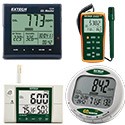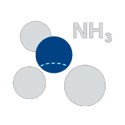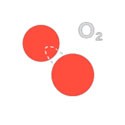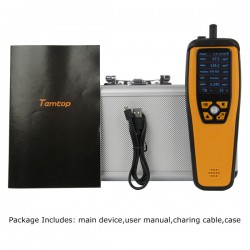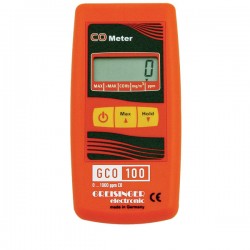No products
Prices are tax excluded
Gas Detectors and Analyzers
New products
-

Hygrometer Elcometer 308
Elcometer 308 Hygrometer Reference: 308-1C The Elcometer 308 Hygrometer...
515,00€ -

Automatic Pull-Off Hydraulic Adhesion Gauge Elcometer 510 - F510-20T
Elcometer 510 Model T Automatic Adhesion Tester; 20mm Kit The Elcometer...
3 146,00€ -

Ethernet Analog Output Module Teracom TCW280
TCW280 Ethernet Analog Output Module The TCW280 is a professional-grade...
272,70€ -

Energy Logger Tinytag TGE-0001 Gemini Data loggers
Tinytag Energy — TGE-0001 The Tinytag Energy Logger TGE-0001 is a...
1 140,00€ -

Waterproof Soil pH Meter PCE-PH20S
Waterproof Soil pH Meter – PCE-PH20S (IP67) with External Electrode The...
149,90€ -

Professional Kitchen Thermometer THERMO JACK JET 30.1069.10
Professional Kitchen Thermometer THERMO JACK JET 30.1069.10 The THERMO...
24,60€ -

Industrial Remote Monitoring via GSM/GPRS with Alarms | HWg-Ares 12
Remote Monitoring and Alarm System via GSM/GPRS The HWg-Ares 12 is an...
587,70€ -

Ethernet I/O Module with Modbus TCP/IP | Teracom TCW241
TCW241 – Ethernet I/O Module with Modbus TCP/IP, 4 Relays, 4 Digital...
185,90€ -

Rugged IP68 Waterproof Temperature & Relative Humidity Data Logger Gemini Tinytag Plus 2 — TGP-4500
Tinytag Plus 2 — TGP-4500 Rugged and Waterproof Temperature and Relative...
260,72€ -

Datalogger - Thermo-Hygrometer PCE-HT 112
PCE-HT 112 Thermo-Hygrometer The PCE-HT 112 temperature and relative...
116,90€ -

Automatic Pull-Off Hydraulic Adhesion Gauge Elcometer 510 - F510-20S
Elcometer 510 Model S Automatic Adhesion Tester; 20mm Kit The Elcometer...
2 731,00€ -

Submersible Temperature Data Logger – Tinytag Aquatic 2 TG-4100 Gemini Data Loggers
Tinytag Aquatic 2 TG-4100 – Submersible Temperature Data Logger Robust...
163,53€ -

-

Datalogger USB de Temperatura e Humidade EasyLog EL-USB-2-LCD+
EasyLog EL-USB-2-LCD+ – USB Temperature & Humidity Data Logger...
118,50€ -

Earth Ground Resistance Tester PCE-ERT 10
Earth Ground Resistance Tester PCE-ERT 10 The PCE-ERT 10 Ground...
198,90€ -

Handheld Vibration Meter PCE-VT 1100
Handheld Vibration Meter The PCE-VT 1100 handheld vibration meter is a...
291,90€ -

Energy Monitoring Module with Ethernet, Modbus Gateway and Data Logger - Teracom TCW260
Energy Monitoring Module The TCW260 is a high-performance energy...
283,70€ -

Ultrasonic Material Thickness Gauge Elcometer MTG8-TXC
Material Thickness Gauge The Elcometer MTG Ultrasonic Thickness Gauges...
2 449,00€ -

Sound Level Meter PCE-MSL 1
Product Description The PCE-MSL 1 sound level meter is a compact and...
36,90€ -

4G LTE Wireless I/O Module with MQTT - Teracom TCG120-4G
4G LTE Wireless I/O Module with MQTT Support The TCG120-4 is an...
269,70€ -

Industrial IoT module Teracom TCW242
Smart Ethernet controller for industrial automation The Industrial IoT...
225,10€ -

Ultrasonic Material Thickness Gauge Elcometer MTG6-TXC
Material Thickness Gauge The Elcometer MTG Ultrasonic Thickness Gauges...
1 930,00€ -

Particle Counter PCE-RCM 12
Product overview – PCE-RCM 12 particle counter The PCE-RCM 12 particle...
466,90€ -

Particle Meter PCE-RCM 02
Product Description The PCE-RCM 02 Particle Meter is an advanced,...
131,90€ -

Elcometer MTG Ultrasonic Material Thickness Gauge MTG2-TXC
Material Thickness Gauges The Elcometer MTG range delivers fast,...
1 126,00€ -

Mini Anemometer PCE-MAM 2
Product Overview The PCE-MAM 2 pocket-size mini anemometer delivers...
38,90€ -

Mini Thermo-Hygrometer PCE-444
Product Description The PCE-444 Mini Thermo-Hygrometer is a compact and...
38,90€ -

Infrared Thermometer - ScanTemp 355
Overview The ScanTemp 355 adds a circle laser sight and lets you read...
42,00€ -

Infrared Thermometer PCE-889B
Overview The PCE-889B infrared thermometer delivers fast, non-contact...
160,90€ -

Reliable IP Monitoring & Control for Sensors and I/O Poseidon2 3268
Poseidon2 3268 — Reliable IP Monitoring & Control for Sensors and...
458,70€ -

Temperature & Humidity Transmitter 4–20 mA — Ref. T3110
Temperature & Humidity Transmitter The T3110 is a temperature and...
225,00€ -

Ultrasonic Material Thickness Gauge Elcometer MTG4-TXC
Material Thickness Gauge The Elcometer MTG Ultrasonic Thickness Gauges...
1 450,00€ -

Stainless Steel Bench Scale 6 Kg — Ref.: FOB 6K2
Description The compact stainless steel bench scale with color-guided...
240,00€ -

Wall-Mount Temperature & Humidity Sensor HTemp-1Wire-Box2 | HW Group
HTemp-1Wire-Box2 Temperature & Humidity Sensor The HTemp-1Wire-Box2...
130,90€ -

Environmental gateway with LTE TDSBOB03
3-in-1 environmental gateway with LTE, PoE and IP67 The Aranet PRO Plus...
560,00€ -

Precision Balance 60 g | 440-21A
The 440-21A precision balance delivers fast, reliable weighing up to 60...
380,00€ -

Professional SNMP Device for Remote Environment Monitoring STE2 PLUS | HW Group
STE2 PLUS — Professional SNMP Thermometer for Remote Environment...
349,00€ -

Infrared Food Thermometer PCE-IR 100 (HACCP)
Description The PCE-IR 100 combines fast, hygienic non-contact infrared...
89,90€ -

Thermal Environment Meter PCE-WB 20SD
Overview The PCE-WB 20SD is a data-logging thermal environment meter...
560,90€ -

Thermal Environment Meter – PCE-WBGT 10
Thermal Environment Meter The PCE-WBGT 10 Thermal Environment Meter is...
137,90€ -

Data Logger with Display for Temperature, Humidity, Dew Point and Pressure
LOG220 PDF – Data Logger with Display for Temperature, Humidity, Dew...
97,00€ -

Environmental Meter — 5-in-1 PCE-EM 883
5 environmental parameters Sound level meter | Lux meter | Anemometer |...
222,90€ -

LAN & Wi-Fi Thermometer for Remote Monitoring | STE2 R2 — HW group
STE2 R2 — LAN & Wi-Fi Thermometer for Remote Monitoring STE2 R2...
245,00€ -

WiFi Remote Temperature Sensor with External Thermocouple – 21CFR
EL-WiFi-21CFR-TC | EasyLog The EL-WiFi-21CFR-TC is an advanced...
227,50€ -

Temperature and Humidity Mini Sensor TDSPT101
Aranet T/RH Mini Sensor Product Code: TDSPT101 Compact, wireless sensor...
80,00€ -

Digital Force Gauge PCE-FM 200
Tension and Compression Measurement up to 200 N The PCE-FM 200 digital...
351,90€ -

-

Oxygen Content in Liquids PCE-DOM 10
PCE-DOM 10 Water Analyzer The PCE-DOM 10 Water Analyzer is a...
284,90€ -

Professional Oven Thermometer with Flexible Metal Probe 14.1037
Key Features Accurate monitoring of cooking chamber temperature up to...
28,00€ -

Multilogger M1220 – Thermo-Hygrometer with 4 Inputs
Product Overview The Multilogger M1220 is a versatile universal...
765,00€ -

Aranet Radon Plus PRO – Advanced Indoor Air Quality Monitoring Radon Plus PRO TDSPSR02
Advanced Radon Indoor Air Quality Monitoring The Radon Plus PRO delivers...
249,00€ -

Temperature and Humidity Data Logger with Display LOG210 TC PDF
LOG210 TC PDF - Temperature and Humidity Data Logger The LOG210 TC PDF...
103,00€
EMI, LDA, Edifício Estoril Office, Av. República 3000A, Esc. 19A, 2649-517 Alcabideche PORTUGAL
EMI LDA offers the gas detection systems for early detection and prevention of Gas Detection. Measurement and detection of combustible and refrigerant gases.
Gas Detectors and Analyzers There are 26 products.
Subcategories
O2/ CO2/ CO
Carbon dioxide measurement is required in many applications from building automation and greenhouses to life science and safety.
CARBON DIOXIDE AND SAFETY
Carbon dioxide is a non-toxic and non-flammable gas. However, exposure to elevated concentrations can induce a risk to life. Whenever CO2 gas or dry ice is used, produced, shipped, or stored, CO2 concentration can rise to dangerously high levels. Because CO2 is odorless and colorless, leakages are impossible to detect, meaning proper sensors are needed to help ensure the safety of personnel.
Effect of Different Levels of CO2Concentration Effect 350 to 450 ppm Typical atmospheric concentration 600 to 800 ppm Acceptable indoor air quality 1,000 ppm Tolerable indoor air quality 5,000 ppm Average exposure limit over 8-hour period 6,000 to 30,000 ppm Concern, short exposure only 3 to 8% Increased respiration rate, headache > 10% Nausea, vomiting, unconsciousness > 20% Rapid unconsciousness, death Ammonia NH3
Description
- Colorless combustible toxic gas with a characteristic pungent smell.
- Lighter than air, density = 0,73 kg/m3
- Lower explosive limit (LEL) = 15 %vol
Health exposure limits (Directive 2000/39/EC):
- 8 hours TWA = 20 ppm (14 mg/m3)
- 15 mins STEL = 50 ppm (36 mg/m3)
A colorless gas, highly soluble in water, with a characteristic pungent smell. Ammonia is a large-scale production of the chemical industry widely used as a raw material for the production of fertilizers and explosives,as a refrigerant,as a cleaning and antimicrobial agent. Ammonia is also produced naturally from the decomposition of organic matter, including plants and animals.
Carbon Monoxide CO
Description
Colorless, odorless and tasteless gas that is toxic to humans in concentrations above about 35 ppm. Lighter than air.
- Density at 0 °C = 1,250 kg/m3
- Density at 25 °C = 1,145 kg/m3
- Lower explosive limit (LEL) = 12,5 %vol
Health exposure limits (Directive 2000/39/EC):
- 8 hours TWA = 20 ppm (23 mg/m3)
- 15 mins STEL = 100 ppm (115 mg/m3)
Carbon monoxide (CO) has anthropogenic origins in the incomplete combustion of fossil fuels or other carbon-containing organic matter. It arises in emissions from electricity production, industrial, commercial or residential combustion and also from transport with combustion engines. It can also have natural origins in volcanic eruptions and forest fires.
In urban areas, road transport is the main source of CO and as such the concentrations of this pollutant vary with traffic variations. Furthermore, this pollutant is emitted in greater quantities when engines are at high speed, that is, when stopping and starting or at low speeds.
CO can cause headache, dizziness and malaise even nausea and vomiting, it can even reduce the ability to learn, work and manual dexterity. The harmful effects on human health are due to its ability to irreversibly combine with blood hemoglobin which, instead of binding to oxygen in the lungs to transport it to tissues and carbon dioxide to transport it from tissues to lung tissues, this function is compromised by the occupation of the hemoglobin position by CO, which creates a very stable composition. With long exposure times it can even cause death.
CO contributes to the formation of tropospheric ozone and its oxidation by oxygen in the air contributes to the greenhouse effect.
Oxygen O2
Description
- Colorless and odorless gas.
- Oxygen is 1,1 times heavier than air.
- Oxygen deficiency (less than 19% O2) is dangerous to human health.
A colorless gas, one of the main components of the air.Oxygen is necessary for the breathing of humans and animals, oxygen deficiency is harmful to health.
Oxygen: Oxidizing Gas for Life Support and Performance Optimization Applications
Oxygen is a colorless, odorless and highly reactive diatomic gas, constituting one of the main components of the Earth's atmosphere, with an approximate concentration of 21%. It is the most abundant chemical element in the Earth's crust, predominantly present in the form of oxides, silicates and carbonates.
In addition to its fundamental role as a breathing gas in medical and life support environments, oxygen has significant oxidizing properties that are exploited in multiple industrial sectors. Its use, in oxygen enrichment processes or partial replacement of atmospheric air, results in substantial gains in efficiency, allowing the optimization of chemical and biological processes, as well as improving performance and reducing the carbon footprint, when compared to sources alternative energy sources.
The main industrial applications of oxygen include combustion and oxidation processes, biological fermentation, wastewater treatment, and aquaculture systems. In the metallurgical industry, oxygen is widely used in combination with gases such as acetylene (C₂H₂), other fuels or with argon (Ar) and carbon dioxide (CO₂) for metal cutting and welding operations, brazing, scarifying, thermal hardening, cleaning and casting. In the food sector, oxygen is used to preserve the color and freshness of perishable products, such as meat, by maintaining a controlled gaseous environment.
Radon
Radon
Radon is a naturally occurring radioactive gas that is colorless and odorless. Its presence in the environment is common, both outdoors and indoors. However, prolonged exposure to radon inside buildings poses a significant risk to public health.
Inhalation of radon is the primary source of ionizing radiation exposure for the general population, contributing over 40% to the annual effective dose of radiation received. The percentage of the annual dose received by the global population can be found in the report "Sources and Effects of Ionizing Radiation, UNSCEAR 2008 Report, Vol. I."
Exposure and Health Effects
Prolonged exposure to radon indoors is one of the leading causes of lung cancer. Smokers and ex-smokers are at an increased risk due to the combined action of tobacco and radon. There is no consistent evidence linking radon exposure to other types of cancer or diseases.Radon produces radioactive particles in the air we breathe. These particles become trapped in our respiratory pathways, where they emit radiation, causing damage to the lungs. This damage increases the risk of lung cancer with prolonged exposure over time.
According to the World Health Organization (WHO), it is estimated that radon exposure causes between 3% and 14% of lung cancer cases globally. In Europe, it is estimated that 9% of lung cancer deaths are attributed to radon exposure, representing about 2% of all cancer-related deaths.
Radon is present everywhere, both outdoors and indoors in buildings. All buildings contain radon, and in most cases, the concentrations are low.
In Portugal, certain areas of the country are more prone to higher levels of radon in buildings. These areas can be consulted on the radon susceptibility map. The map, produced from a national survey and the national radon monitoring campaign, indicates the level of susceptibility to radon indoors. However, the only way to know the exact radon concentration is by direct measurement.
Radon Presence and Monitoring
Although radon is present both outdoors and indoors in buildings, its concentration can vary significantly. Most buildings have low concentrations, but there are specific geographic areas where radon levels may be higher.The only way to determine the exact radon concentration in a building is through direct measurements.
Mitigation of Radon Exposure
Reducing exposure to radon indoors can be achieved through preventive measures implemented during the construction phase of new buildings or through corrective or remediation measures in existing buildings.
Air Quality Monitor Elitech Temtop M2000
Brand: Elitech The chemical composition of the atmosphere is constantly changing due to the large amount of pollutants released every day. Inhalable particles are one of the most serious air pollutants in terms of public health. The M2000 Air Quality Analyzer measures PM2.5, PM10, Particles, CO2, HCHO, Temperature and Humidity.
285,00€High Quality CO (Carbon Monoxide)...
Brand: SensecaHigh quality CO measuring device, for measuring carbon monoxide concentration up to 1000 ppm (0,1 Vol %) in the ambient air. Via freely adjustable alarm function, the instrument caution the user both optically and acoustically against a dangerous gas concentration. The gas concentration will be measured at the frontal sensor opening.
225,30€


